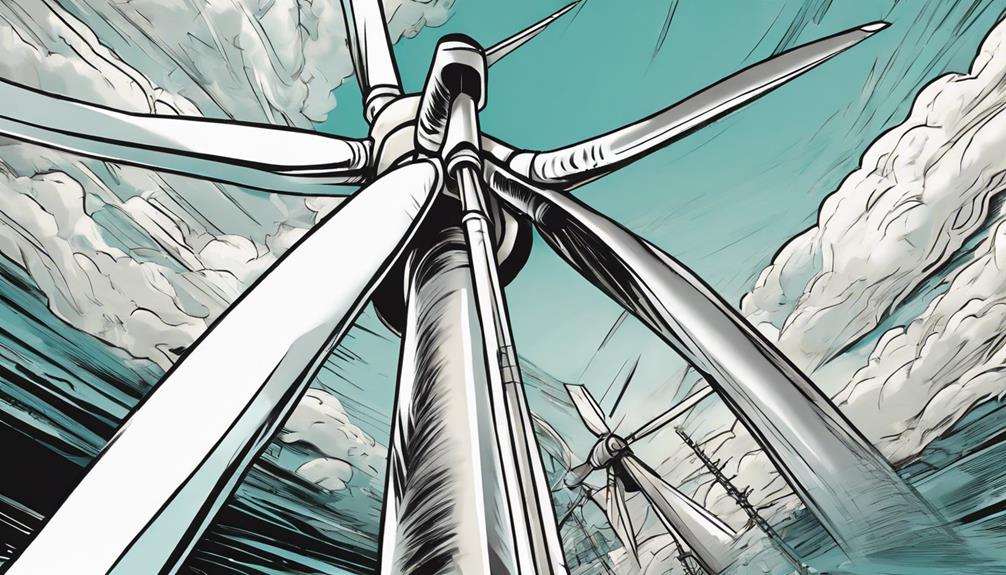You may wonder why geothermal energy isn't more common. Well, the reasons include high initial costs, specific location requirements, lack of public awareness, and the need for more technology and policy advancements. If you're curious about how these factors impact the utilization of geothermal energy, keep exploring.
Key Takeaways
- High initial investment costs deter widespread adoption.
- Limited public awareness hampers geothermal utilization.
- Geological constraints restrict suitable locations for geothermal energy.
- Competition from other renewables affects geothermal investment.
- Lack of standardized regulations hinders geothermal development.
Initial Investment Costs
Investing in geothermal energy projects entails facing substantial upfront costs primarily due to the necessity for specialized drilling equipment and technology. The cost of drilling deep boreholes to access geothermal reservoirs is a significant barrier for widespread adoption. These costs can outweigh those of traditional fossil fuel plants, making geothermal projects a more significant initial investment.
The specialized equipment required for drilling adds to the expense, as well as the need for advanced technology to harness the geothermal energy efficiently. Because of these high upfront costs, geothermal projects may struggle to secure financing, especially when uncertainties in resource assessment and development are present.
Despite these challenges, the potential for long-term cost savings and environmental benefits makes geothermal energy an attractive option in the renewable energy sector. Overcoming the initial investment hurdle can lead to sustainable and clean energy production in the future.
Location-Specific Resources

When assessing geothermal energy utilization, the availability of resources heavily relies on the specific location's temperature and geological characteristics. Geothermal energy potential varies considerably across different regions.
- Temperatures range from 5°C in Nordic countries to 15°C in Mediterranean countries at depths of 5 to 500 meters, impacting the feasibility of geothermal energy extraction.
- High-temperature basins like those in Tuscany reach temperatures of 300°C at depths of 3,000 meters, making them ideal for efficient geothermal electricity production.
- Locations with temperatures exceeding 110°C are vital for effective geothermal electricity generation due to the higher temperatures required.
- The suitability for geothermal energy utilization is influenced by physical space limitations, initial investment costs, and the level of public awareness in a particular area.
Understanding these location-specific resources is essential for maximizing the benefits of geothermal energy and identifying regions where its utilization can be most impactful.
Lack of Public Awareness

A significant challenge faced by geothermal energy is the lack of public awareness regarding its benefits and potential. Many individuals are unaware that geothermal energy can be utilized for generating electricity and providing heating solutions.
Public education plays a crucial role in increasing the adoption of geothermal energy as a renewable resource. The limited public awareness contributes to the underutilization of geothermal energy in various regions worldwide. By enhancing public knowledge about geothermal energy, there's a possibility of garnering greater support and investment in this clean energy source.
Initiatives aimed at raising public awareness about the advantages and feasibility of geothermal energy could potentially lead to substantial advancements in its utilization. Encouraging discussions, educational campaigns, and outreach programs are essential to bridge the gap in public awareness and foster a more sustainable energy future through the widespread adoption of geothermal technology.
Research and Technological Advancements

Recent advancements in research and technology have greatly improved the efficiency and effectiveness of geothermal energy extraction methods. These advancements have paved the way for significant progress in geothermal heating.
Innovations in drilling technology have streamlined the process of accessing geothermal heat, making it more efficient than ever before.
Enhanced geophysical exploration techniques play an essential role in identifying suitable geothermal reservoirs, ensuring ideal heat extraction.
Advanced materials and equipment have bolstered the durability and effectiveness of geothermal power plants, contributing to their longevity and performance.
Ongoing research continues to focus on enhancing the overall efficiency and cost-effectiveness of geothermal energy production, driving further innovations in the field.
These developments underscore the potential of geothermal energy as a reliable and sustainable source for geothermal heating, highlighting the importance of continued advancements in research and technology.
Policy Support

Effective policy support is fundamental for fostering the development and expansion of geothermal energy projects. Governments play a crucial role in promoting renewable energy sources like geothermal through incentives, subsidies, and regulatory frameworks. By prioritizing renewable energy in their policies, governments can stimulate investment and innovation within the geothermal industry.
Clear and stable policies are particularly vital as they help reduce risks for investors and developers operating in the geothermal sector. Collaborative efforts between policymakers, industry stakeholders, and researchers are necessary to create and implement effective geothermal energy policies that drive sustainable growth.
When governments provide a supportive environment for geothermal energy development, it not only benefits the environment by promoting clean energy but also contributes to the diversification of the energy mix, enhancing energy security for the future. Hence, strong policy support is crucial in unleashing the full potential of geothermal energy as a reliable and sustainable energy source.
Geothermal Industry Collaboration
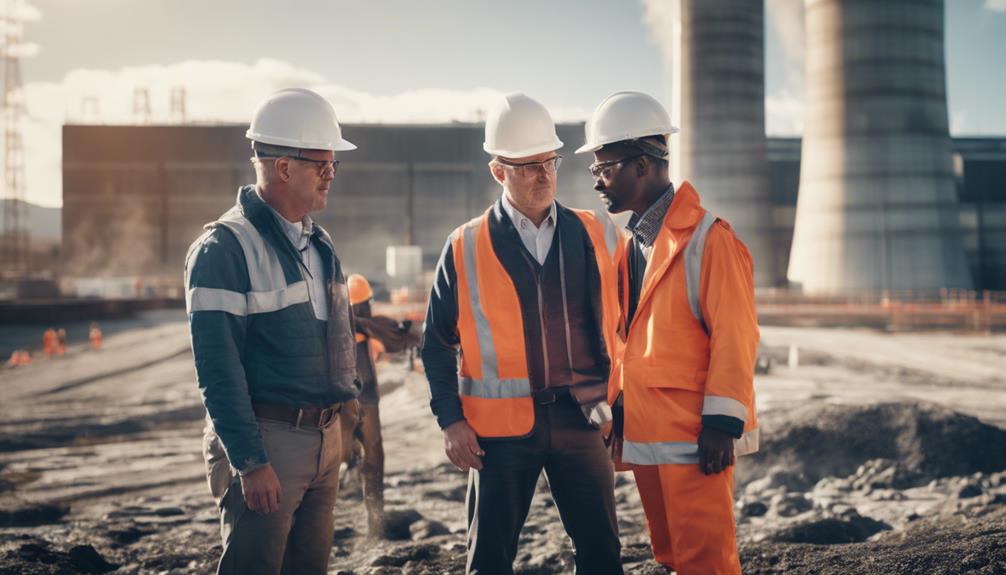
You should focus on the significance of risk mitigation strategies, the importance of private investment, and the value of collaborating with industry stakeholders in the geothermal sector.
By addressing risks and creating frameworks for financial risk mitigation, the industry can attract more private investment, fostering growth and sustainability.
Collaborating with key stakeholders is essential for developing a conducive environment that supports the successful expansion of geothermal projects.
Risk Mitigation Strategies
Through collaborative efforts within the geothermal industry, risk mitigation strategies have been developed to address various challenges in new geothermal projects. The GEORISK project played a significant role in identifying and mitigating risks in geothermal projects, leading to the creation of targeted strategies.
Key points to note include:
- Risk Categorization: GEORISK categorized risks in geothermal projects into external hazards, subsurface uncertainties, and technical issues, aiming to make these projects more attractive to private investors.
- Financial Frameworks: European countries leveraged insights from GEORISK to establish financial risk mitigation frameworks tailored for geothermal projects.
- Industry Sustainability: GEORISK's initiatives have contributed to the sustainability and expansion of the geothermal industry by addressing risks and uncertainties, fostering growth in the sector.
- Private Investment Importance: Private investment is essential for the success and advancement of geothermal projects globally, highlighting the need for effective risk mitigation strategies.
Private Investment Importance
Collaboration among key stakeholders in the geothermal industry is fundamental to attracting private investment and driving the growth of new projects and technologies.
Private investment plays a vital role in advancing the geothermal sector by facilitating the development of innovative projects and technologies.
Initiatives like the GEORISK project have been pivotal in identifying and addressing risks associated with geothermal endeavors to make them more appealing to private investors. By categorizing and mitigating risks such as external hazards, subsurface uncertainties, and technical challenges, the industry has been able to create a more conducive environment for private investment.
Through collaboration across Europe, financial risk mitigation frameworks have been established, further incentivizing private investors to support new geothermal projects.
The involvement of private investors is imperative for the progression of geothermal energy as a sustainable and dependable source of renewable energy, highlighting the significance of fostering collaboration within the geothermal industry to attract essential private investment.
Industry Stakeholder Collaboration
Effective coordination among industry stakeholders in the geothermal sector is vital for driving innovation and progress in renewable energy projects. This collaboration fosters the development of strategies to address risks and encourage private investment in geothermal projects.
The GEORISK project exemplified the importance of industry stakeholder collaboration by focusing on identifying and mitigating risks through cooperative efforts. Risks in geothermal projects were analyzed and categorized into different aspects to create frameworks that attract private investment.
European countries particularly benefited from this collaborative approach, as it enabled them to advance geothermal energy projects and overcome sector challenges. By working together, industry stakeholders can create a conducive environment for private investment to play an essential role in the growth and sustainability of the geothermal industry.
Private Investment Importance
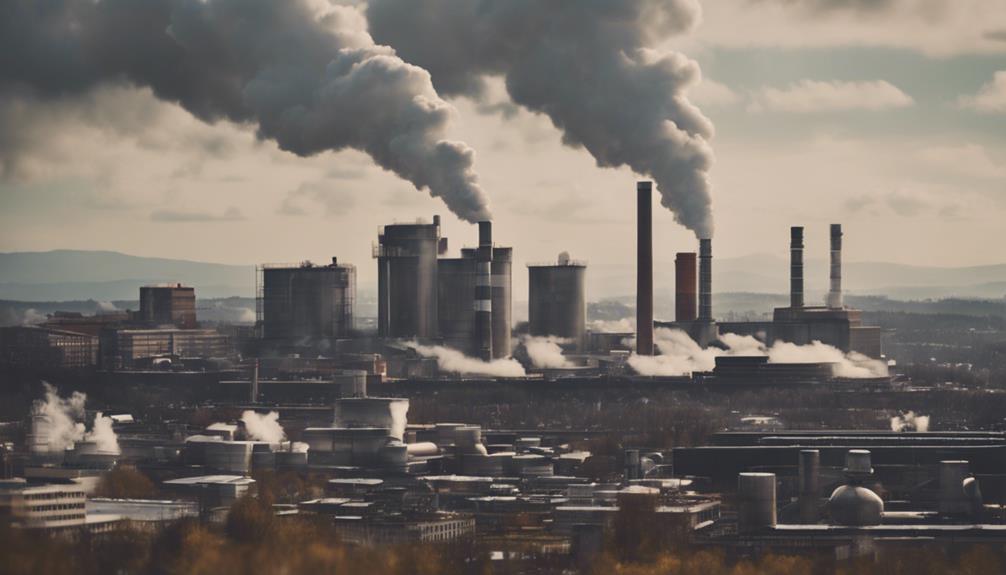
You must understand that private investment plays a pivotal role in the advancement of the geothermal industry, aiding in the financing of new ventures and the expansion of existing infrastructure.
The GEORISK project was instrumental in identifying and addressing risks associated with geothermal projects to attract private investors, ultimately fostering industry growth.
Investment for Growth
Private investment plays an essential role in fueling the expansion and development of the geothermal industry, driving innovation and project growth.
When considering investment for growth in the geothermal sector, there are key factors to keep in mind:
- Private investment is necessary for funding new geothermal projects and expanding existing infrastructure.
- Initiatives like the GEORISK project have been pivotal in identifying and mitigating risks to attract private investors and foster industry growth.
- Collaboration among key stakeholders in the geothermal sector, as seen in the GEORISK project, is critical for driving investment and project scalability.
- Developing financial risk mitigation frameworks, a goal of the GEORISK project, is essential for facilitating private investment in geothermal ventures.
Private investment not only propels technological advancements but also plays a significant role in advancing the utilization of geothermal energy for a sustainable future.
Industry Collaboration Benefits
Collaboration among stakeholders in the geothermal industry is instrumental in maximizing the benefits of private investment for industry growth and innovation. Private investment plays a crucial role in advancing renewable energy sources like geothermal energy, driving the development of new projects and fostering technological innovation. The GEORISK project exemplified the significance of industry collaboration by addressing risks associated with geothermal ventures, attracting private investors to support sustainable projects. By working together, key stakeholders in the geothermal sector can create financial risk mitigation frameworks that make geothermal projects more financially viable and attractive to investors.
| Benefits of Industry Collaboration | Description | Example |
|---|---|---|
| Enhanced Risk Mitigation | Collaborative efforts identify and address risks, making projects more appealing to private investors. | GEORISK project categorized and mitigated risks in geothermal projects, attracting private investment. |
| Innovation Promotion | Industry collaboration fosters innovation in technology and project development. | Collaborative initiatives drive the implementation of new technologies in geothermal energy production. |
| Financial Viability | Working together ensures that geothermal projects are financially feasible and sustainable in the long term. | Stakeholder collaboration results in the creation of financial frameworks that support geothermal ventures. |
Transition From Oil and Gas
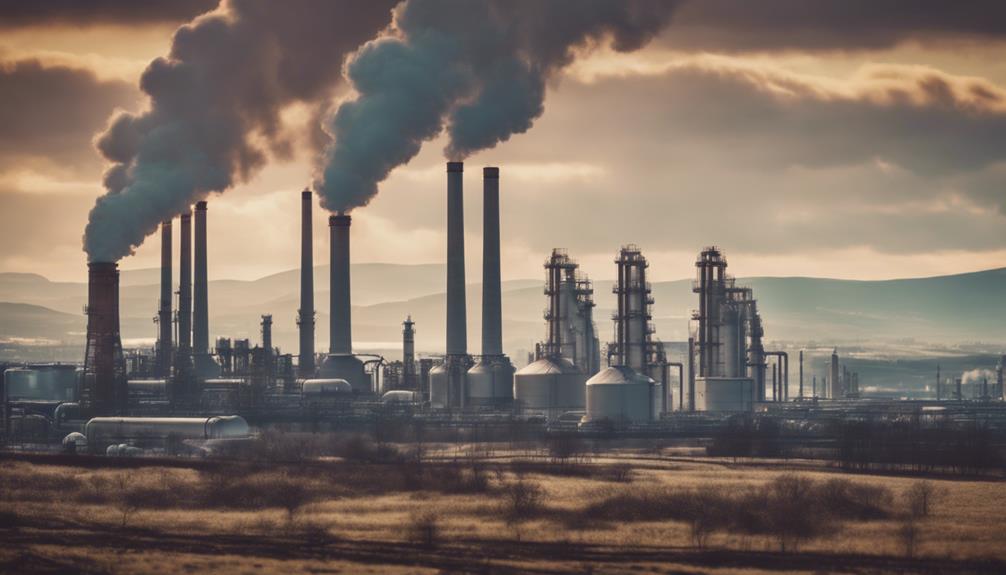
As the geothermal energy sector continues to expand, the move from the oil and gas industry plays an essential role in utilizing existing skills and expertise. This shift is facilitated by similarities in technologies and expertise between the two industries, enabling a smoother integration of personnel.
The adoption of technologies from oil and gas to geothermal projects not only speeds up the shift towards renewable energy sources like geothermal but also assists in the industry's growth and development. The momentum building in the geothermal industry is vital for a successful energy transformation towards cleaner and more sustainable sources.
Governments in the EU are likely to increase their focus on renewable resources such as geothermal as part of their energy transformation strategies.
Energy Crisis Impact
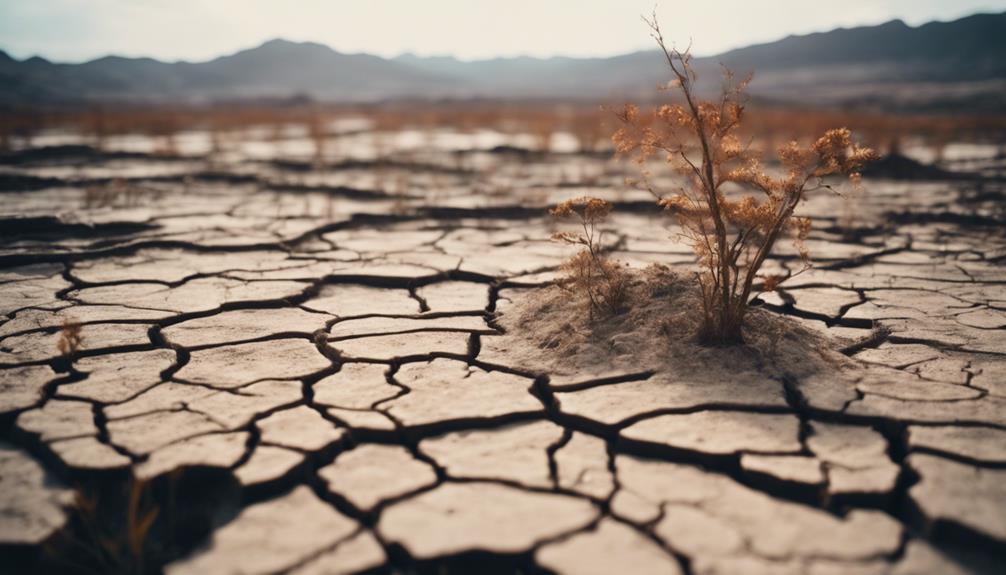
You need to address the impact of the energy crisis on the geothermal industry and how it's shaping the response to the current situation.
The growth of the geothermal sector is essential in providing a sustainable solution amidst the challenges posed by energy crises.
Emphasize the importance of supporting renewable resources like geothermal to guarantee a successful shift towards more reliable and environmentally friendly energy sources.
Energy Crisis Response
Amidst the ongoing energy crisis in Europe, the increasing focus on renewable resources like geothermal energy is becoming more prominent. As governments and industries grapple with the challenges posed by the energy crisis, here are some key responses being observed:
- Prioritizing investments in renewable energy sources, such as geothermal, to address the energy crisis.
- Accelerating the adoption of sustainable energy sources like geothermal to reduce gas dependence and increase energy security.
- Recognizing geothermal energy's potential to provide reliable power, which could be essential in mitigating the impacts of the energy crisis.
- Driving a shift towards renewable resources like geothermal energy to guarantee a more sustainable and resilient energy future.
These responses underscore the growing recognition of geothermal energy as a valuable asset in navigating the current energy crisis and moving towards a more sustainable energy landscape.
Geothermal Industry Growth
The current energy crisis in Europe is propelling the growth of the geothermal industry as a strategic response to increasing renewable energy usage. As clean energy sources gain popularity, momentum is building for geothermal energy adoption. Notably, skills and expertise from the oil and gas sector are making a transition to geothermal projects, indicating industry growth. Governments in the EU are expected to intensify their focus on renewable resources like geothermal in light of the ongoing energy crisis. Private investment plays a crucial role in expanding the geothermal industry and facilitating a successful energy transition.
| Key Points | Impact | Significance |
|---|---|---|
| Skills Transfer | Growing | Transition from oil and gas |
| Government Focus | Increasing | Shift towards renewables |
| Private Investment | Vital | Industry expansion |
Government Focus on Renewables

Governments throughout the EU are increasingly emphasizing renewable resources like geothermal to address carbon emissions and improve energy security. This shift in focus towards renewable energy is motivated by the acknowledgment of the potential benefits of geothermal energy.
Here are some key points to keep in mind:
- Policy changes and incentives could stimulate more investments towards geothermal projects, expediting the shift to cleaner energy sources.
- Enhanced government support may spur the advancement of more efficient technologies and infrastructure for widespread adoption of geothermal energy.
- European countries prioritizing renewables in their energy mix could lead to increased funding and research opportunities for geothermal initiatives.
- A favorable regulatory environment established by a government focus on renewables could bolster the growth and expansion of geothermal projects.
Frequently Asked Questions
Why Don't We Use Geothermal Energy More?
You could use geothermal energy more if initial costs decreased, public knowledge increased, and technology advancements made it more accessible. Shifting skills from the oil and gas industry could also boost adoption.
Why Are There Not a Lot More Geothermal Energy Plants in the United States?
There aren't a lot more geothermal energy plants in the United States due to high drilling costs initially hindering widespread adoption. With federal incentives, geothermal energy could grow substantially, providing reliable and sustainable electricity.
Is Geothermal Energy Increasing or Decreasing?
Geothermal energy is on the rise globally, with countries like the U.S., Indonesia, and Iceland leading the way. Its increasing utilization aligns with sustainable development goals, indicating a promising future for this renewable resource.
What Are the Disadvantages of Geothermal Power?
When examining geothermal power, consider the drawbacks: land subsidence, high initial costs, limited accessibility, environmental impact, and geological constraints. These factors influence the utilization of geothermal energy and its potential expansion in the future.
How Can Geothermal Energy be Utilized More Effectively to Combat Climate Change?
Geothermal energy and climate change have a complex relationship with huge potential. By constructing more geothermal power plants, we can effectively utilize this renewable energy source to reduce greenhouse gas emissions and combat climate change. Additionally, investing in geothermal technology research will further enhance its effectiveness in addressing environmental challenges.
Conclusion
So, why don't we utilize geothermal energy more than we do now?
Well, like a hidden treasure waiting to be discovered, geothermal energy faces challenges like initial investment costs, location-specific resources, and lack of public awareness.
But with research, technological advancements, policy support, and private investment, the potential for geothermal energy to shine bright like a diamond in the rough is undeniable.
It's time to dig deep and access the power of the Earth beneath our feet.




